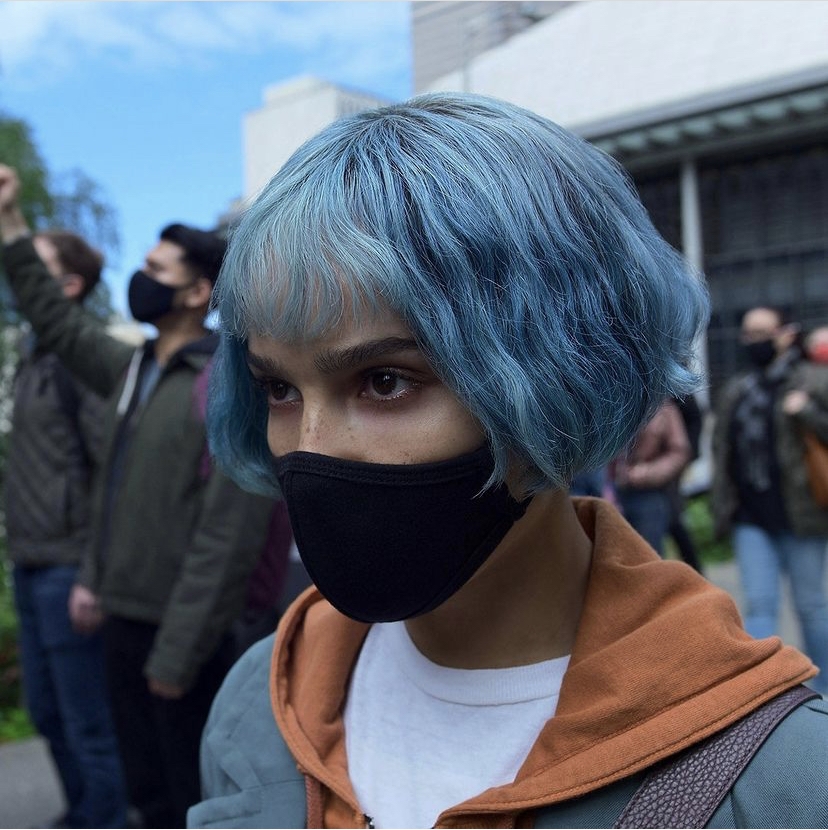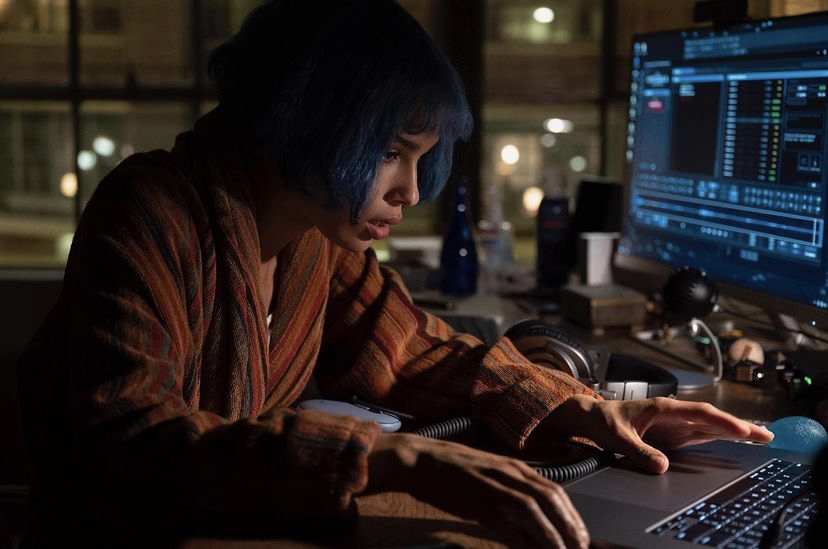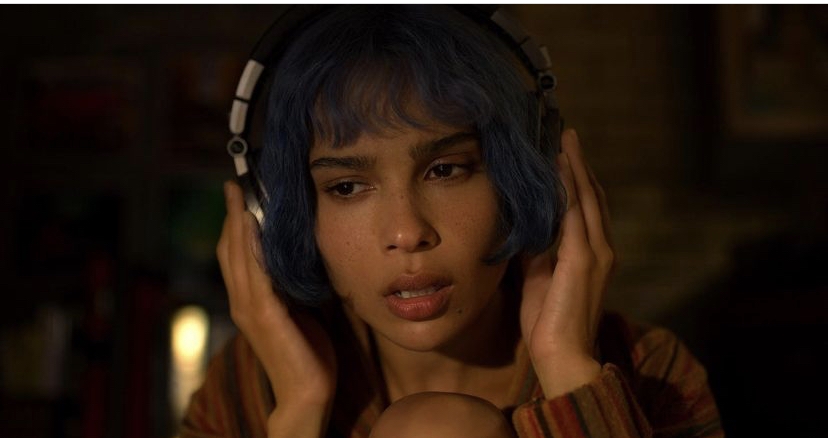Editor’s Note: This review contains spoilers for the HBO Max film, “KIMI.”
“KIMI,” a new Steven Soderbergh film released on HBO Max on Feb. 10, is a techy thriller set in the midst of the COVID-19 pandemic.
The film follows Angela Childs (Zoë Kravitz) who works for the tech company Amygdala while suffering from crippling agoraphobia. Amygdala is famous for creating the KIMI, a device not unlike the Amazon Alexa or the Google Nest. When you say its name, an amiable, robotic voice responds to help. It records each request, and when the device is unable to assist, tech workers like Angela listen to the streams to help the KIMI better understand its customers individually.
Upon hearing a potential murder in her queue of KIMI streams one day, Angela is deeply disturbed and realizes she is obligated to report the incident. This means she must also face the outside world to call attention to her discovery. In doing so, she ends up fighting for her life in a deadly attempt to sweep this incident under the rug.

While the plot was not overly unique, there were some interesting spins on the technology-take-over genre. The decision to include the pandemic and mental health was certainly an update from any other movies like this one, adding to the paranoia that “KIMI” is not so far out of touch with our own reality.
The only character that really developed in the film was Angela. She has blue hair, reminiscent of Laika Studios’ “Coraline,” and even wears a yellow sweater for most of the film. She inhabits a compulsive personality with many distinct quirks and habits, making the audience more appreciative of her humanness, such as putting on hand sanitizer repeatedly, waving her hands back and forth, brushing her teeth to perfect health and washing her sheets as soon as they’re even the slightest bit dirty.
Kravitz embodies this role seamlessly. Her acting is admirable and her social awkwardness is palpable even through the screen. There is something so incredibly normal about her life as Angela, especially as the world continues to push through the COVID-19 pandemic. As addressed in the film, her agoraphobia worsened due to the pandemic, and her lifestyle is reminiscent of the lockdowns experienced in 2020.
The majority of the film takes place in her apartment, making for a distinct setting in relation to many other films with numerous settings. Angela’s apartment is not only her home but her workspace and her life. The film took liberal time to incorporate cinematic shots of the elements in each room, shamelessly showcasing its aesthetic angles, such as Angela’s intricate tech desk setup and her minimalist yet unique bedroom. Here, she cycles on a stationary bike, brushes her teeth thoroughly, clears her KIMI Queue daily, video calls her mother and therapist and snoops on people across the street from her in other apartments.
Angela’s space goes from pristine to bloody after she ventures outside, and she recognizes that what she fears from the outside can just as easily make its way inside. The juxtaposition between her tidy home in the movie’s beginning and the unkempt disaster at its end signifies the abruptness of Angela’s journey from being a reclusive cynic to a partially healed woman in a budding relationship. The pace at which her life changed sparked a readiness to live in the world and experience life for what it has to offer since it could be taken away at any moment.
“KIMI” is charming and visually captivating, yet simple and somewhat rushed. The film said what needed to be said; however, the plotline was hasty, the characters were underdeveloped and the resolution was abrupt. The villains were nameless, faceless and nondescript, and all of the supporting characters felt unfinished. Angela’s love interest does not get developed enough to fully care about their relationship’s success in the end, and the awkward tension between Angela and her mother is neither reconciled nor explained. Kravitz’s Angela was the only saving grace, drawing in the interest of audiences for this very swift film.

The movie was released solely through HBO Max, despite the A-list statuses of Kravitz and Soderbergh, yet its plot holes and unanswered questions would not have been substantial enough for a theatrical release. It is unlikely that audiences would have been motivated enough to pay to see this film in theaters and walk out satisfied. Watching the film from their homes instead draws the audience closer to Angela’s situation of being stuck inside all day. Overall, “KIMI” received mixed reviews from critics and audiences. On the official Tomatometer as of March 9, critics gave the film a 91%, but audiences gave the film a measly 52%.
“KIMI” is a realistic vision into the foreseeable future of pandemic-thrillers and gripping evil-tech storylines. While it’s not exactly Oscar-worthy, nail-biting, hanging-on-the-edge-of-your-seat fantastic, it has a satisfying ending. It’s not the first of its kind, but it is certainly worth an 89-minute couch break.
Lillian Dunn is an Entertainment Intern for the winter 2022 quarter. She can be reached at lbdunn@uci.edu.


